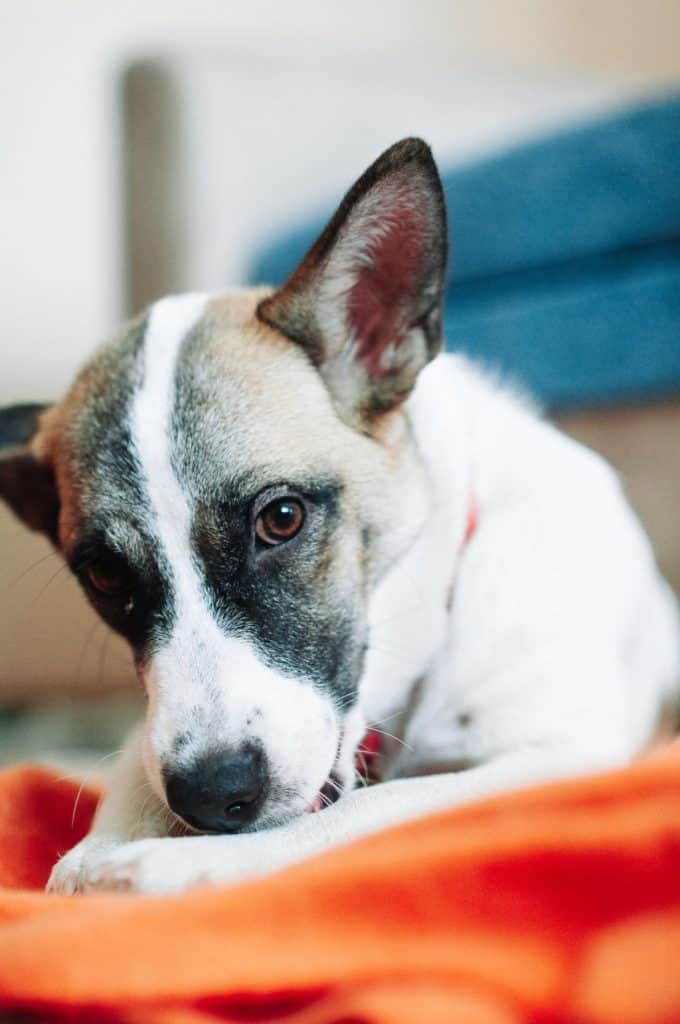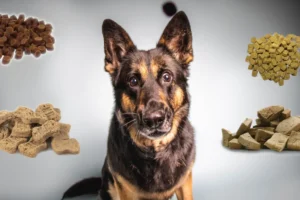Note: We may earn a commission from helpful, relevant links in our content. No cost to you. See our privacy policy.
There are all kinds of permanent markers, and almost all pose a risk if left around your dog. Whether you want to draw on your dog or work in an area filled with markers, here’s what can happen if the dog eats one.
Some permanent markers even have toxic ink, which is another danger. Let’s explore why permanent markers are never safe for playing around with your dogs.

Can Permanent Markers Hurt a Dog?
If consumed, permanent markers can be dangerous to dogs. Ingesting marker ink might induce stomach distress and possibly vomiting. Furthermore, inhaling the fumes from a marker can cause lung problems, and the plastic can cause further issues.
I had an emergency with my dog once they ate a marker with plastic, but luckily nothing happened. The vet warned me that it could harm dogs if excessive amounts of permanent markers are swallowed or inhaled because of plastic. Just like with other toys swallowed, it can lead to intestinal obstruction.
Some markers, however, may include more harmful substances than others.
There are numerous permanent markers available, with Sharpies among the most popular in the United States. While sharpies are typically not toxic, their “non-toxic” classification merely implies they can be safely inhaled but never consumed, and they may not protect against leeching through the skin. In addition, the Sharpies manufacturer warns against drawing on skin with them.
Sharpies and other alcohol-based markers contain solvents and pigments that can be hazardous to dogs if consumed or inhaled. These markers’ emissions might potentially cause respiratory discomfort. Some Sharpie varieties contain xylene, a compound which, when ingested or inhaled by dogs, can lead to complications ranging from skin irritation to more serious respiratory issues.
If swallowed, oil-based markers can potentially be dangerous to dogs as well. They can cause vomiting and diarrhea, leading to more severe issues, including pancreatitis.
Writing with a sharpie on a dog to mark a few locations for the vet is harmless, but drawing on your dog with one is not. They do not wash out quickly and are generally not designed to be drawn on human or animal skin.
It is critical to seek medical assistance if a dog consumes or inhales a considerable amount of marker ink or fumes, especially if they eat marker plastic. It is usually better to be safe than sorry, so contact your veterinarian as soon as possible if you are unclear about what to do.
What to Do if Your Dog Eats a Permanent Marker?
The best thing to do is to call your veterinarian and see what they say. They will most likely tell you to keep an eye on her for any symptoms of distress and to observe if the dog throws up or if the plastic comes out the other end.
They may encourage you to bring your dog in for an assessment or induce vomiting at home.
If your veterinarian recommends that you induce vomiting in your dog, give him hydrogen peroxide (1 teaspoon for 5 pounds of body weight), with a maximum dose of 3 tablespoons for dogs weighing more than 45 pounds. Use a 3% hydrogen peroxide solution available at most drugstores.
Watch your dog for signs of distress, such as vomiting, lethargy, diarrhea, or difficulty breathing. Bring your dog to the vet immediately if he displays any of these signs or if you cannot induce vomiting.
Another option is to feed your dog some bread. This can bind to the plastic, making it easier to pass through and less likely to cut anything when passing through and coming out.
The basic rule is that you should not give your dog laxatives unless your veterinarian has approved them. If your dog ingests some markers, there’s a good chance they’ll be fine, but there’s also a slight possibility they’ll develop an intestinal obstruction and require surgery.
Suggested read: Guide to Managing Poisoning in Dogs

Which Markers Are Safe for Dogs?
If you must use a marker around your dog, choose washable markers or food-grade colors that are safe to use around animals. These markers are intended to be harmless if swallowed in small doses and to cause minimal harm to your dog.
No permanent markers are considered safe for dogs to consume or inhale. Even “non-toxic” markers can cause stomach distress and possibly vomiting if swallowed.
When shopping for markers or any art supplies, consider labels like ‘child-safe’ or ‘washable’ as a sign of lower toxicity levels. Though not foolproof, they generally indicate fewer harmful chemicals that could harm a curious pet.
To avoid accidental consumption or inhalation, keep all markers and other dangerous compounds (such as a silly string or any kind of metals) out of reach of dogs and other pets.
Might be interested in: Assembling Dog First Aid Kit
FAQs
Are dry markers toxic to dogs?
Because it is usual for dogs to put dry-erase markers in their mouths and eat them, today’s dry-erase markers are non-toxic. However, plastic is the main danger that can cause constipation. Take the dog to the vet to confirm they can pass the plastic safely.
Which are the most toxic markers for dogs?
Aromatic solvent-based markers are the most dangerous to your dogs, especially those that contain Xylene, a neurotoxin that can harm their organs.
Xylene is dangerous because it can be inhaled, ingested, and absorbed through the skin and mucous membranes. It is not advisable to write on the skin with these markers. ThoughtCo states that Xylene-containing Sharpie products include King Size Sharpies, Magnum Sharpies, and Touch-Up Sharpies.
Never draw on your dog with the large fat industrial sharpies since they are created differently and contain terrible chemicals that leak easily into the skin. If you want to draw something on your dog, use a washable Crayola marker or plain chalk.
Are ink pens toxic to dogs?
Inks are typically low in oral toxicity. Though writing ink is usually regarded as nonpoisonous, it does contain trace levels of alcohol and glycol, which can be harmful if consumed in high quantities. Plastic is another potential hazard that can cause intestinal blockage.
How do you clean the dog’s fur of permanent marker?
Bathing with a face-safe dog shampoo is one of the safest options if you draw on their face. You can use rubbing alcohol topically on the body, but protect the nose and work in a well-ventilated location. Apple cider vinegar is a healthy substitute but always dilute in water before use.
Alex, a passionate animal lover, has experience in training and understanding animal behavior. As a proud pet parent to two dogs and three cats, he founded AnimalReport.net to share insights from animal experts and expand his knowledge of the animal kingdom.









